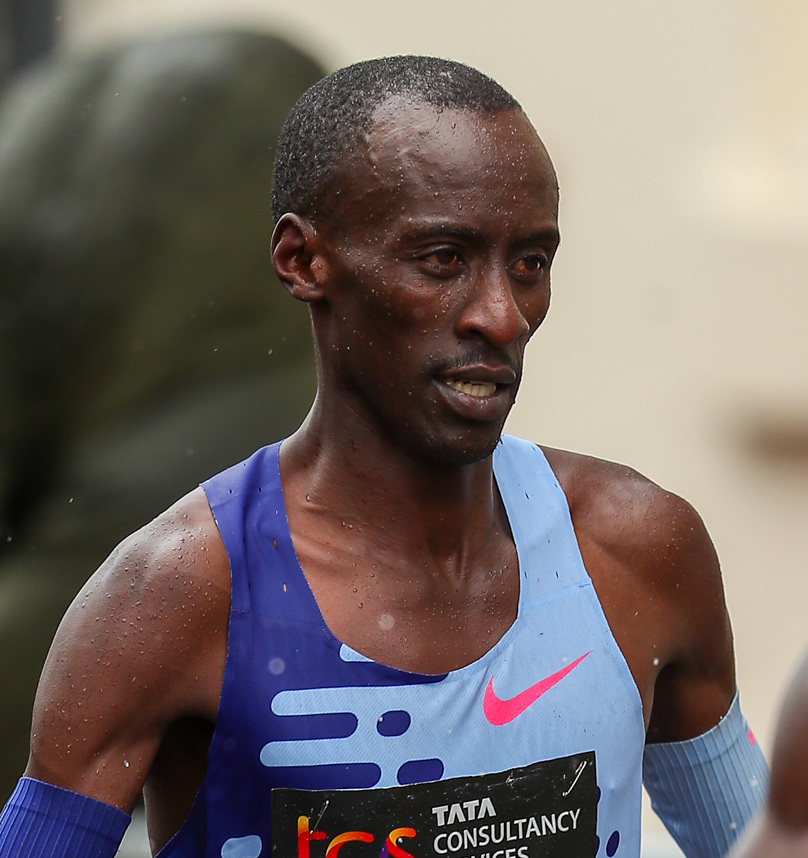Ever since Kenyan distance runner Kelvin Kiptum smashed the world record in the marathon, questions have begun to arise about the methods elite runners use to perform at high levels, with some facing accusations of doping.
While competing in the 2023 Chicago Marathon, Kiptum, of Kenya, ran 2:00:35, breaking the previous world record in the marathon. This equates to an average pace of 4:36, a blistering pace few amateur runners are able to achieve.
The previous long-standing world record of 2:01:09 was held by Eliud Kipchoge, also a Kenyan, who has broken several of his own records in the marathon distance over the course of his marathon career.
While Kiptum, 23, who has been running since he was 13, attributes his running success to rigorous and consistent training–as opposed to the use of performance enhancing drugs–some elite runners have faced scrutiny for allegedly using performance-enhancing drugs and other forms of athletic doping.
Among those caught doping include members of Nike’s now-defunct Oregon Project, which trained some of the best American athletes, including Olympic medalist Galen Rupp. In addition, the program helped foster the success of British athlete Mo Farah, who eventually reached Olympic and World Championship glory by the peak of his career.
The program was shut down when its founder and head coach, Alberto Salazar, received a four-year doping ban. Salazar, once considered one of most highly regarded coaches in the world of distance running, was found to have used banned methods of physical enhancement like testosterone treatment.
This scrutiny in the world of endurance sports is not new, and many athletes have faced questions about the ways they achieved their athletic success in the past.
Much public awareness about doping athletics came after Lance Armstrong, an American cyclist and seven-time Tour de France winner, was exposed for his use of blood doping in 2012. Armstrong’s guilt, made even clearer in the 2014 documentary “Stop at Nothing,” resulted in increased public awareness about the negative effects of doping on the sport of cycling and athletics in general.
Armstrong utilized a method of physical enhancement known as blood doping, which involves cycling blood in and out of the body.
“For distance athletes usually the biggest culprit is athletes participating in blood doping,” Blayne Lapan, Head Strength and Conditioning coach at Williston, said. “This is where they take their blood out of their body to separate the white and red blood cells, then put the red blood cells back into the body.”
This method, Lapan said, has been used by endurance athletes because it can assist with cellular respiration, a vital process of everyday life.
“Because blood is where all of our oxygen is, nutrients of cellular respiration transported in it makes this transportation process more effective,” Lapan explained. “This increases one’s ability to perform at a higher level.”
Despite the physiological benefits of doping, it can pose serious health risks.
“Because [blood doping] makes blood legitimately thicker, it can have serious implications on our heart and has been known to cause massive heart attacks and other issues,” Lapan told The Willistonian.
Since the Lance Armstrong scandal was made public, numerous other professional athletes’ use of doping tactics have been brought to light.
Questions about doping in professional running have more recently faced renewed attention following the New York City Marathon on Nov. 5, which was attended by a number of top runners from Kenya.
The runner-up in the Men’s race was Kenyan runner Albert Kori, who finished with a time of 2:06:57. The race was won by Tamirat Tola, of Ethiopia, whose winning time was 2:04:58.
Kenya, from which many of the world’s top distance runners hail, has faced significant accusations of doping within its running community. In 2015, nearly 300 Kenyan athletes were punished for doping. Kiptum, along with some other Kenyans, has publicly distanced himself from this behavior.
Kiptum runs nearly 150 miles per week in preparation for races, mileage considered high even among the highest caliber of distance runners. He attributes this type of discipline in training—not prohibited advantages—to his success in the sport.
“My secret is training,” Kiptum said. “Not any other thing.”
This sentiment has been expressed by other long-distance runners. Most notably, Eliud Kipchoge has publicly criticized the doping and cheating of some of his teammates and fellow Kenyans. Kipchoge is famous for being the first human to break the 2-hour barrier in the marathon, a feat that has made him a respected figure in the sport.
Kipchoge told the Olympic Channel in 2020 that doping will cause athletes to “be negative in sport, negative in the community and will actually shorten your career,” warning those who may be interested in doping of the tactic’s degrading effects on the culture of the sport.
Kipchoge also considers avoiding doping a matter of morality for athletes.
“If you dope you will not be confident living in this world,” Kipchoge explained. “It’s immoral to engage in a shortcut or in [banned] methods of making improvement in sport.”
Like Kipchoge, Lapan sees consistent dedication and discipline as the only path to success in sports.
“There is no short cut,” Lapan said. “It takes years of dedication and attention to detail in every facet of your life to maximize your training.”
In addition to consistent training, there are some ways to maximize physical function without having to use banned or dangerous methods.
Lapan says this includes “checking in regularly with physicians who can monitor and track specific blood levels and figure out ways to maximize recovery and nutrient availability.” In addition, it is important that athletes “monitor nutrition extremely closely and maximize sleep and recovery.”
At the high school- and college-levels, the competitive nature of sports can often cause athletes to seek unfair advantages. While doping and steroid use are not common in prep schools, NEPSAC has rules in place to ensure the fairness of sports.
“The NEPSAC mirrors the NCAA list of banned substances even though there is no organization to test,” Melissa Brousseau, Associate Director of Athletics and athletic trainer at Williston, said.
Because of the potential punishments for violating NEPSAC’s rules regarding doping and taking other shortcuts, Brousseau warned athletes at Williston that the risks of cheating far outweigh any potential benefits.
“There is truly nothing to gain and a lot to risk,” she explained. “In the grand scope of prep schools, there are athletes who want to recover faster & support their efforts. These are typically those who will go onto college.”
The mental and physical toll that competitive athletics can take often motivates high school athletes to take unfair shortcuts, oftentimes jeopardizing their athletic careers in the process.
Brousseau sees seeking mental health resources as one of the most important solutions to these mental health struggles that athletes often face.
“Accessing the right medical resources is key, and being strong in the mental game is also important,” she explained. “Surrounding yourself with people who have your best interest in mind is key. You have to advocate for yourself and know what you’re putting in your body.”
Brousseau believes high school athletes should always be aware of the many risks of seeking unfair advantages, while also being inspired by what their bodies are naturally capable of.
“The key to remember is that the adolescent athlete is still growing, and banned substances can result in catastrophic results in the short term and long term,” she explained. “But if you’re training hard, you should respect what your body is able to do without the banned substances.”





















